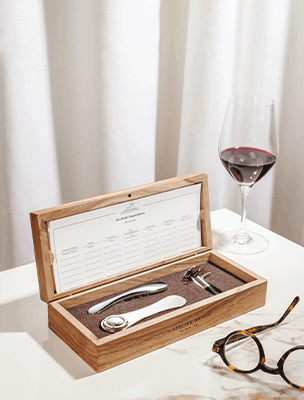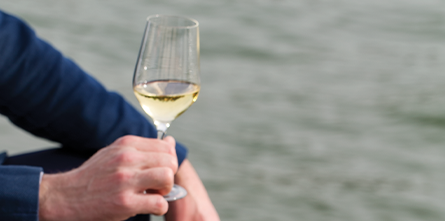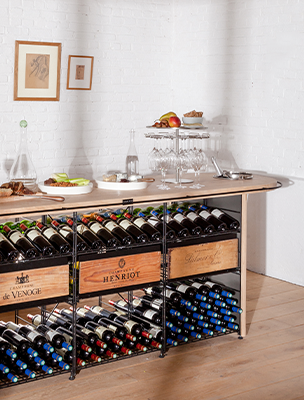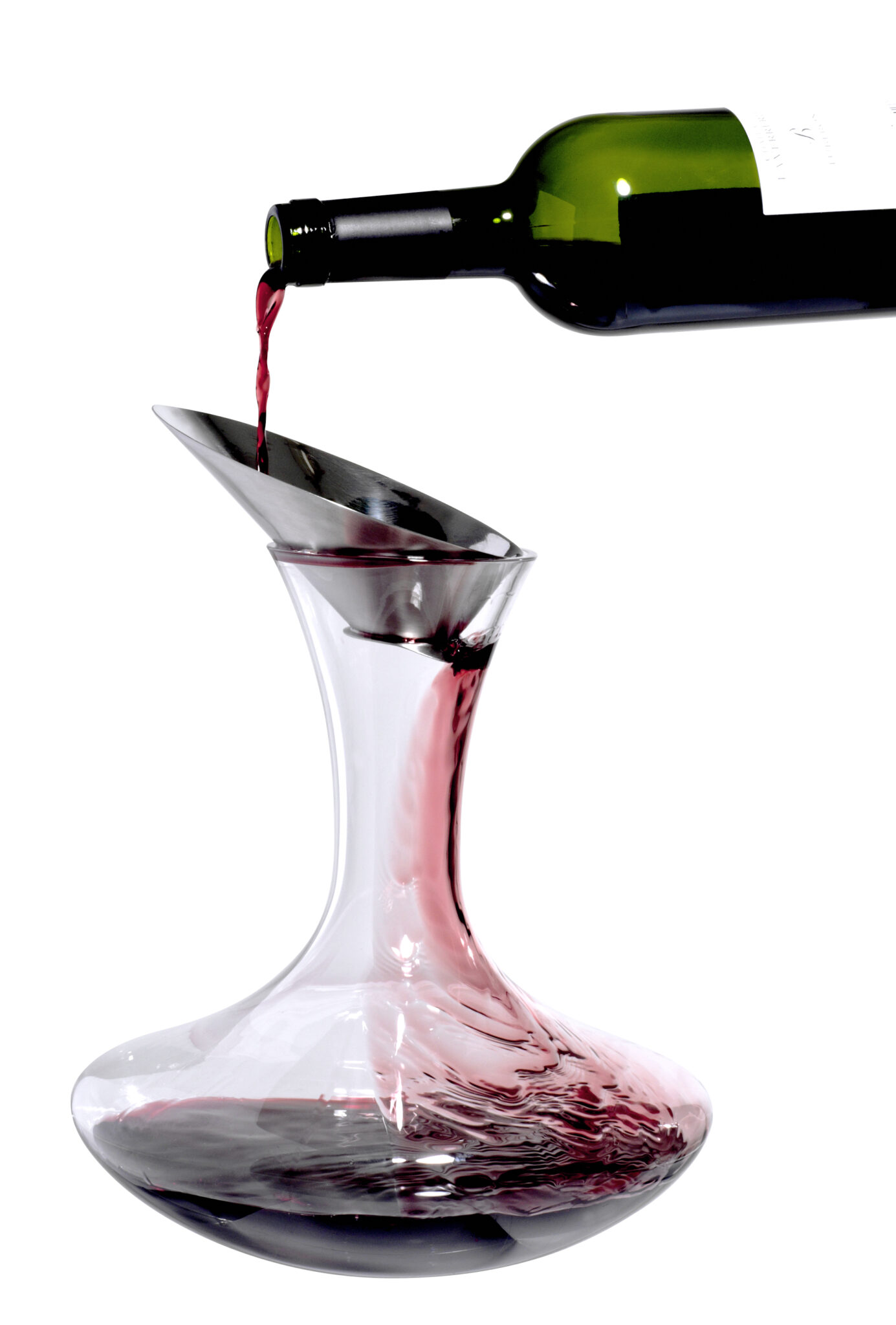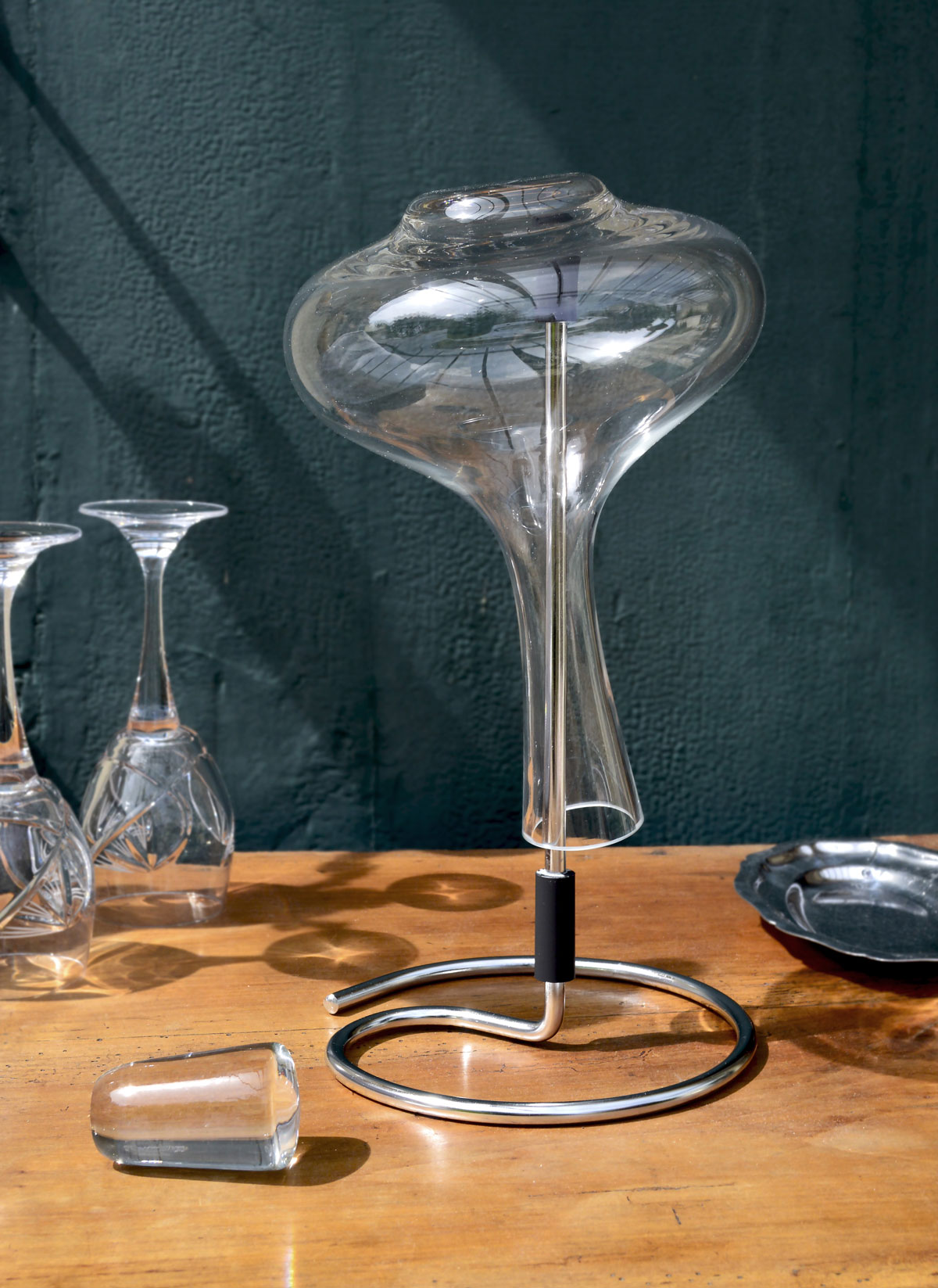The act of decanting wine is a critical step that can either preserve or ruin an excellent vintage within mere seconds. It’s essential for any wine connoisseur, sommelier, or oenophile to master the technique of decanting and aerating wines. This guide aims to assist you in learning how to decant wine, from getting everything ready to pouring it into a decanter.
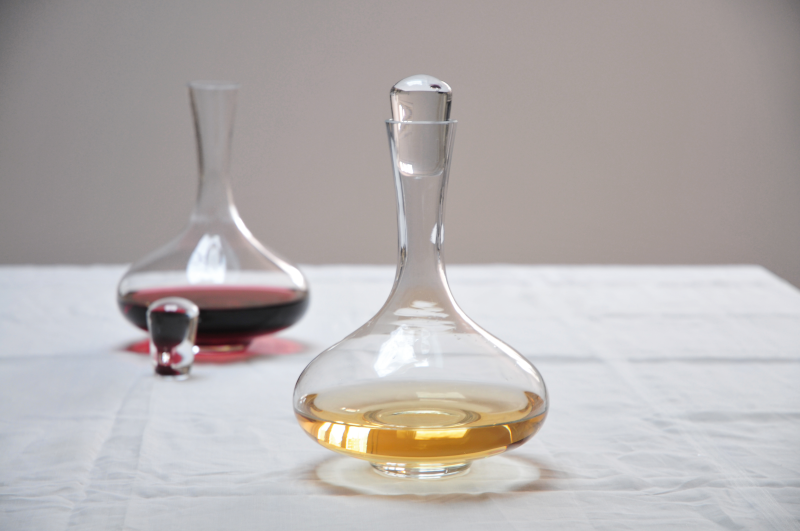
Summary:
- Why should you decant wine?
- How do you decant a bottle of wine?
- How do you use a wine decanter?
- What wines should you decant and aerate?
Why should you decant wine?
When a bottle of wine has been aged in a wine cellar, it may develop tannic residues that can spoil its flavor when served. To prevent this, decanting the wine after opening the bottle is crucial in separating the liquid from any solid sediments that may have formed. Thus, decanting wine becomes necessary to ensure the wine’s taste remains unaffected.
What does decanting wine mean?
To remove impurities from a bottle of wine, one must pour off the clear liquid. This act of separating the wine from its sediments, which are the heavy, tannic substances that accumulate at the bottom of the bottle over time, is called decanting. By decanting, the wine in your glass is free from any sediments, resulting in a smoother taste.
The verb “decant” derives from the Latin word “canthus,” which means the lip of an alchemist’s crucible. Decanting involves pouring wine from the spout of the bottle into the neck of the decanter or tasting glass, allowing only the clear and pure liquid to pass through while leaving any sediments that have formed during the wine’s aging process behind.
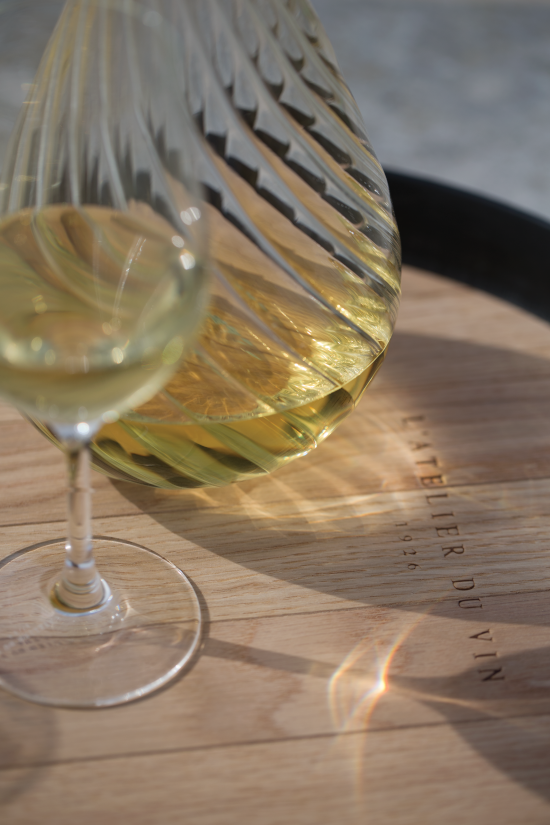
It’s important not to mistake decanting with aeration. Within the field of oenology, these are two separate processes, even though they may both involve using a wine decanter. For instance, an older vintage wine can be decanted to remove its sediments, but aerating it could permanently disrupt the balance of its aromas, and so it should be avoided.
What does decanting do to the wine?
The primary effect of decanting wine is to remove the sediments that may have formed in the bottle over time. When a vintage’s aromatic bouquet is stifled by the solid body of its tannins, decanting frees it from its inert state, allowing it to recover its vigor and enabling its aromas to express themselves in all their finesse.
Additionally, the decanting process has an oxygenating effect on the wine when it is transferred from the bottle to the decanter or carafe. This stage is crucial, as any unpleasant odors that may have passed through the cork can quickly evaporate. When done with care and a delicate touch, decanting should gently awaken the wine and rid it of any impurities that may have accumulated during its extended rest.
When should you decant a wine?
Decanting becomes an essential step in the wine-tasting process when a bottle of wine has matured in a wine cellar and sediment has formed inside. Before decanting a vintage wine, it’s important to gently raise the bottle to an upright position and let it stand for at least a few hours. This allows most of the sediment to sink to the bottom of the bottle, as far away from the neck as possible, making it easier to keep the sediment inside the bottle while slowly pouring the wine into the decanter.
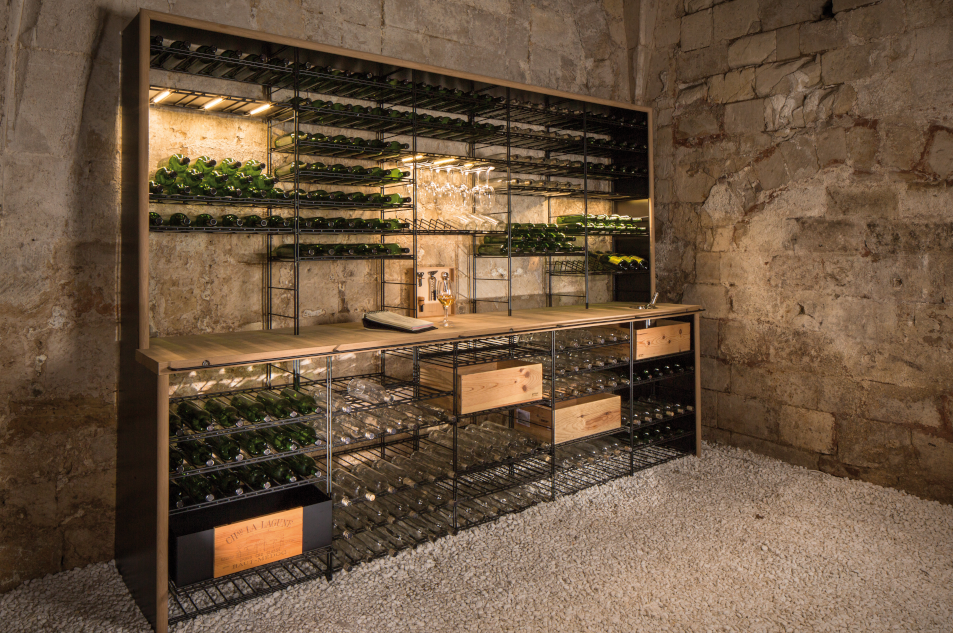
How do you decant a bottle of wine?
To fully appreciate a beautiful mature vintage, it is crucial to have the knowledge and skills to properly decant your wine in accordance with the principles of oenology. Decanting is a delicate process that requires the use of appropriate tools and a comprehensive understanding of the best practices in order to achieve the desired results.
What steps are involved in decanting wine?
To decant wine that has sediment, a wine decanter can be used by following these steps:
- Gently lift the wine bottle and stand it upright for 12 to 24 hours before opening, allowing the sediment to settle at the bottom of the bottle.
- Cut the foil, open the bottle and wipe the neck. Let the wine breathe naturally in the wine cellar for a few hours, allowing the sediment to further settle at the bottom of the bottle.
- Place a candle on the table and light it, positioning it close to the decanter. The candle’s soft light will help in monitoring the sediment through the bottle’s glass while pouring it into the decanter.
- Carefully and gently pour the wine into the decanter, slowing down gradually as you approach the sediment at the bottom of the bottle. Stop pouring when the sediment approaches the neck to keep it trapped inside the bottle.
- For wines that are sensitive to oxygenation, it is advisable to use a decanter with a stopper, without a cheesecloth, to limit the wine’s exposure to air. If you use such a decanter, close it immediately after pouring the wine.
- The wine is now decanted. You can either serve it or let it aerate in the decanter before tasting, depending on the wine’s age and type.
When dealing with very old and delicate wines, the act of pouring the wine into a decanter can be too rough and aeration can cause irreparable damage. In these situations, you can follow the first two steps of the decanting process and then skip the decanter altogether, instead pouring the wine directly into your tasting glasses. In this case, the decanting process depends solely on the technique of pouring the wine carefully to avoid any sediment ending up in your glass. A wine pourer can be particularly helpful in these circumstances.
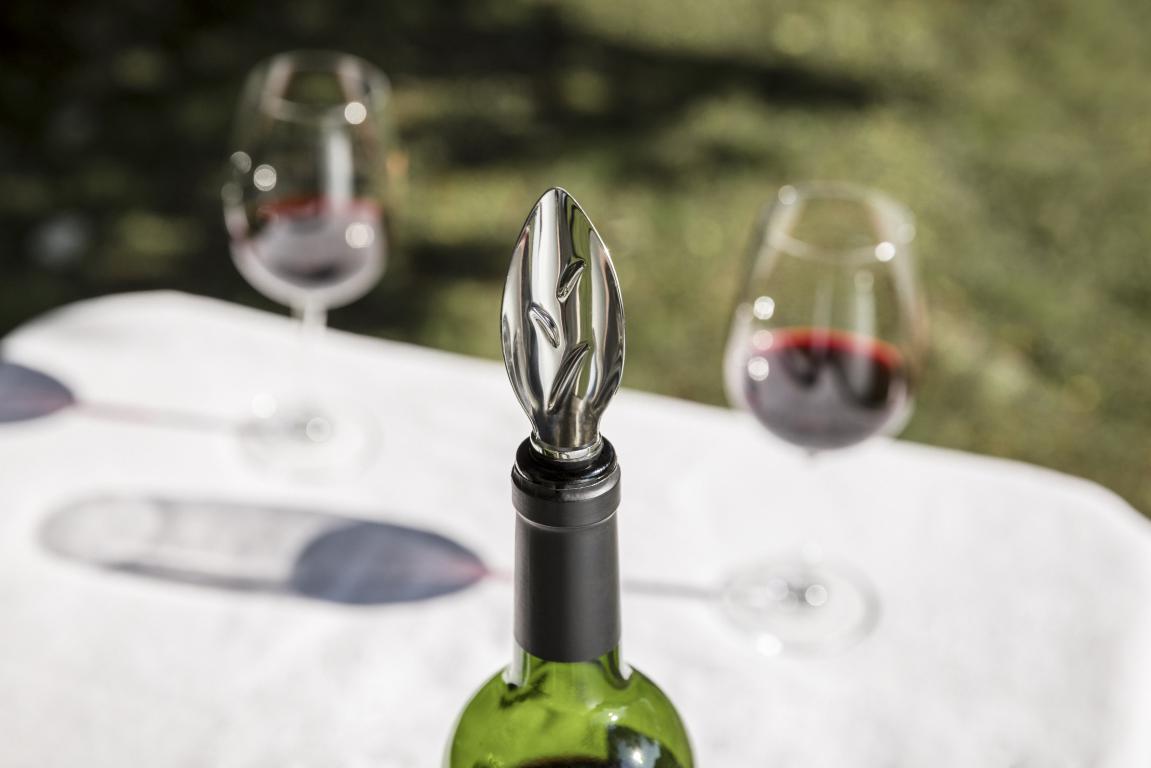
What tool do you need to decant wine?
To decant wine, the main equipment required is a wine decanter, which is primarily used for aerating the wine. However, you can also use a Universal Developer in conjunction with the decanter, placed at the opening of the decanter or glass to initiate the aeration process.
Though less common, additional accessories such as wine pourers and decanting glasses are also available. Once the wine has been decanted, the patented Exploreur Oenologie glass created by L’Atelier du Vin can be used to enhance its flavor. The glass contains an Aroma line in its wall that brings out the wine’s full range of flavors.
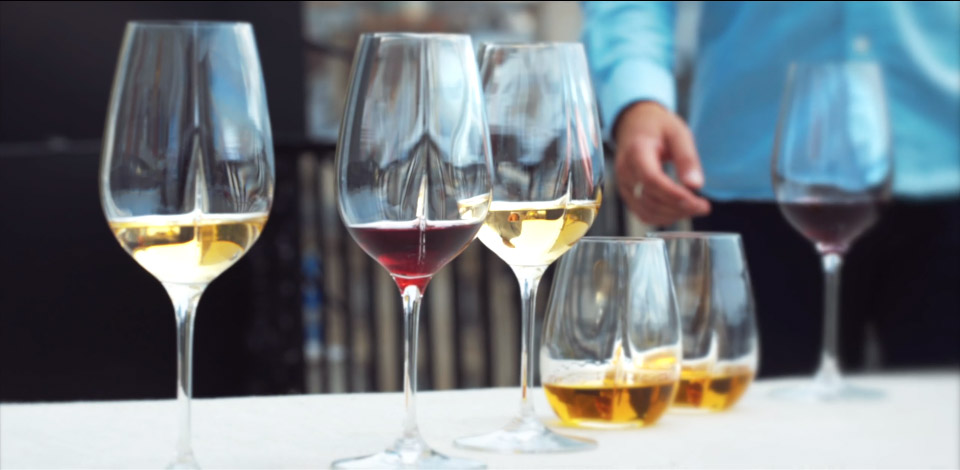
How long should wine be aerated in a decanter before serving?
Decanting and aeration can enhance the flavors of young and mature wines if done correctly.
- For a wine that is less than 5 years old, decanting is optional but can be followed by up to 4 hours of aeration in a decanter, helping to soften any overpowering flavors and develop the wine’s body.
- If the wine is aged between 6 and 10 years, it should be decanted and allowed to breathe for 1 to 2 hours in a wine decanter before serving.
- When dealing with older wines over 10 years old, decanting should be approached with great care and not be over-aerated as this could cause the wine to lose its aromas and ruin its quality.
How do you use a wine decanter?
The purpose of using a decanter can vary depending on how it is used and how the wine is poured into it. Decanting wine involves separating it from impurities, while aerating wine involves letting it breathe for a certain amount of time before consumption. Therefore, pouring wine into a decanter can serve different purposes, such as simply transferring it into a different vessel for serving. To further enhance its performance, various accessories such as decanter stoppers and cheesecloths can be used.
Using a decanter to decant wine
To ensure that only the wine free from impurities is poured into the decanter during the decanting process, it is essential to pour the wine slowly and carefully. The primary goal is to prevent the sediment from escaping into the decanter. When approaching the sediment, the pouring speed should be reduced even further, and the bottle should be lifted before any sediment reaches the neck to avoid it from getting into the decanter.
For extra protection, a cheesecloth can be placed over the neck of the decanter to prevent even the tiniest amount of sediment from passing through. Additionally, using a decanter with a stopper can be advantageous, particularly for delicate wines, to prevent excessive oxidation caused by prolonged exposure to air. The wine’s delicate flavors are easily affected by over-oxidation, and a stopper limits the wine’s exposure to the air, preventing this issue.
Using a decanter to aerate wine
If you simply want to aerate a young wine, you can pour it directly into your decanter without decanting it. As the wine hits the clear surface of the decanter, its liveliness is accentuated. The wine’s vigorous personality gradually mellows down, taking a breather as it rests in the airy environment for a few hours. Once you taste the wine, you will be greeted with a delightful display of scents and tastes on both the nose and the tongue.
What does double decanting mean?
To salvage a decanter that has been contaminated with impurities, the double decanting technique can be used. Initially, wash and dry the original bottle, where most of the sediment has been collected. Next, pour the wine slowly from the decanter back into the original bottle, definitively separating the wine’s nectar from any last traces of unwanted sediment. It’s crucial to avoid repeating the double decanting process, as over-decanting may pose a risk to your valuable beverage.
How do you clean a decanter?
To achieve the best possible results when using a decanter, it is essential to ensure that it is thoroughly cleaned and purified beforehand. Using water, rinse the decanter generously and with vigor to eliminate any remnants or deposits of previous wine. It is advisable to avoid using soap as it may leave behind chemicals that could damage the aroma of the wine. To clean a wine decanter, you can utilize a microfiber cloth, or specialized ceramic washing balls. Finally, a decanter dryer rack can be utilized to allow for the decanter to dry upside down completely.
What wines should you decant and aerate?
Not all wines benefit from decanting. If a bottle contains no sediment, decanting is unnecessary. However, young wines may benefit from decanting to allow for aeration.
Decanting can be especially beneficial for exceptional red wine vintages with robust tannins and complex flavors, which are more likely to form sediment as they age. It is important to decant these wines carefully, without exposing them to excessive oxygen.
In general, the decanting process is highly recommended for great wines from Bordeaux, the Rhone Valley, Madiran, and old Cahors vintages. However, for fragile red wines that have weakened due to old age, it’s not advisable to decant them even if using a stopper. Additionally, young and fruity wines can benefit from aeration in a decanter to enhance their flavor and aroma, but if they have no impurities and are light in color, decanting is not necessary.


